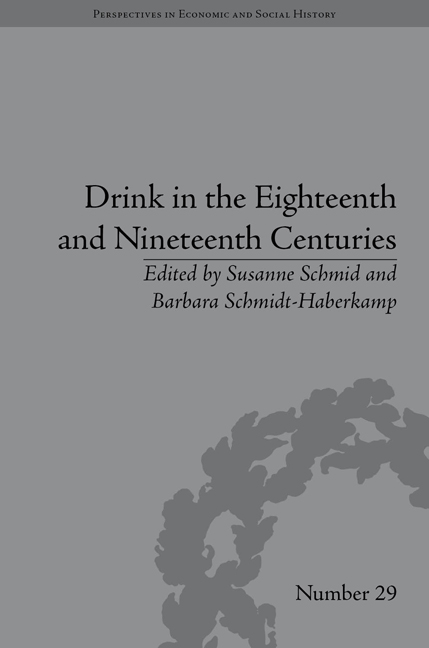Book contents
- Frontmatter
- CONTENTS
- Acknowledgements
- List of Contributors
- List of Figures and Tables
- Introduction
- Part I Ritual and Material Culture
- Part II Institutions and Social Class
- 3 Café or Coffeehouse? Transnational Histories of Coffee and Sociability
- 4 Claret at a Premium: Ned Ward, the True Tory Defender of Fine Wines?
- 5 Eighteenth-Century Travellers and the Country Inn
- 6 Drinking, Fighting and Working-Class Sociability in Nineteenth-Century Britain
- Part III Temperance and the Misery of Alcohol
- Part IV Intoxication and Therapy
- Part V Case Studies: Rum, Cocoa and Magical Potions
- Notes
- Index
3 - Café or Coffeehouse? Transnational Histories of Coffee and Sociability
from Part II - Institutions and Social Class
- Frontmatter
- CONTENTS
- Acknowledgements
- List of Contributors
- List of Figures and Tables
- Introduction
- Part I Ritual and Material Culture
- Part II Institutions and Social Class
- 3 Café or Coffeehouse? Transnational Histories of Coffee and Sociability
- 4 Claret at a Premium: Ned Ward, the True Tory Defender of Fine Wines?
- 5 Eighteenth-Century Travellers and the Country Inn
- 6 Drinking, Fighting and Working-Class Sociability in Nineteenth-Century Britain
- Part III Temperance and the Misery of Alcohol
- Part IV Intoxication and Therapy
- Part V Case Studies: Rum, Cocoa and Magical Potions
- Notes
- Index
Summary
In a 2005 essay for the New York Review of Books, the late historian Tony Judt offered a telling comparison between American coffee and Italian espresso. He asked his readers:
Consider a mug of American coffee. It is found everywhere. It can be made by anyone. It is cheap – and refills are free. Being largely without flavor it can be diluted to taste. What it lacks in allure it makes up in size. It is the most democratic method ever devised for introducing caffeine into human beings. Now take a cup of Italian espresso. It requires expensive equipment. Price-to-volume ratio is outrageous, suggesting indifference to the consumer and ignorance of the market. The aesthetic satisfaction accessory to the beverage far outweighs its metabolic impact. It is not a drink; it is an artifact.
The article was significantly titled ‘Europe vs. America’. Judt used this simple comparison between American and Italian coffee culture as a means of introducing his real theme: the deep divergences and tensions between European and American attitudes towards culture, economy and politics in an age of globalization. Although he may not have known it when he wrote these words, Judt was following an established tradition of critical writing about coffee and nationality.
Almost since its discovery in the late fifteenth- and sixteenth-century Ottoman world, coffee has been central to consumption routines and to practices of sociability in the societies to which it has been introduced.
- Type
- Chapter
- Information
- Drink in the Eighteenth and Nineteenth Centuries , pp. 35 - 46Publisher: Pickering & ChattoFirst published in: 2014



